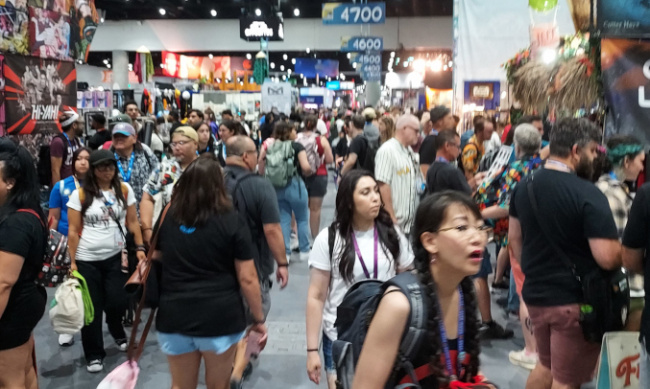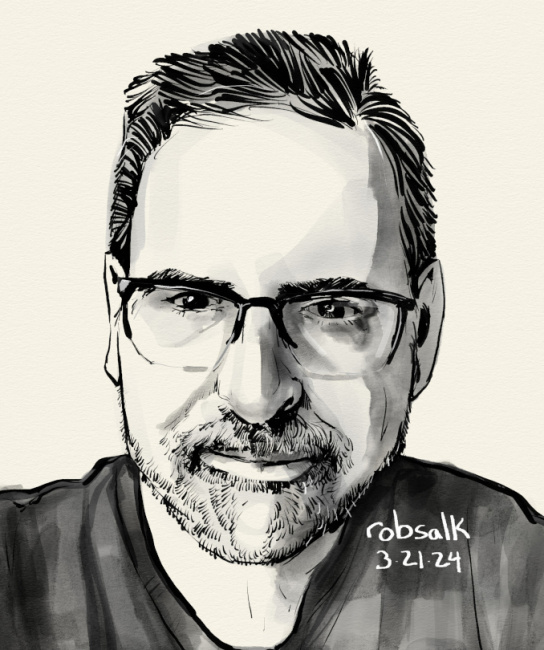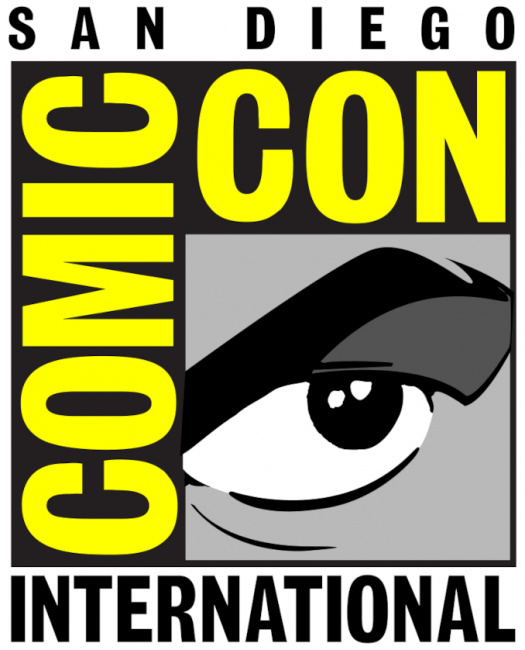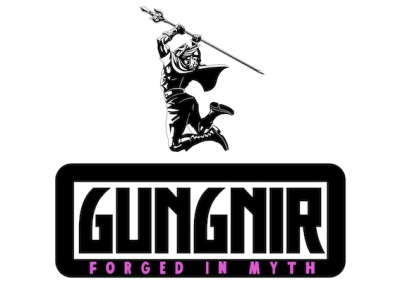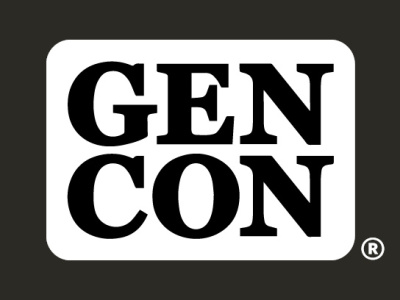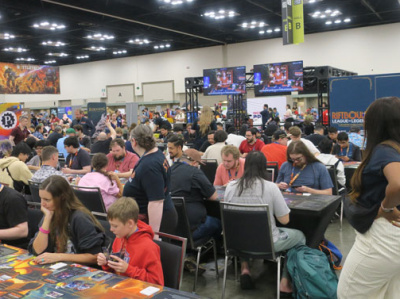For five years since the show’s 50th anniversary bash in 2019, we have been waiting through pandemics, various "@Home" and Special Editions, and a Hollywood strike to see what SDCC in the 2020s would look like. Now we know: it is a runaway 18-wheeler with bad brakes careening across a rope bridge over a deep ravine filled with snapping crocodiles, planks splintering under the wheels, somehow making it safely across.
While that description could perhaps fit any of the pre-pandemic Cons of the 2010s, this year the show was clearly chafing against physical and economic limitations in ways that make it understandable why organizers kicked off Con month by airing some of their complaints with uncharacteristic bluntness. That said, it was a glorious, spectacular return to form that leaves us all breathless, exhausted, and hopeful that solutions can be found.
The Good. Everything that makes SDCC the king of cons was back in 2024, dialed to 11. There were the big studio announcements, led by Marvel’s big reveal of Robert Downey Jr’s return in the role of Dr. Doom. Marvel also lit up the skies with a spectacular drone show over Petco Field following the buzzy Deadpool/Wolverine panel in Hall H Thursday.
We had showbiz surprises, like Keanu Reeves turning up and receiving an Inkpot Award from the convention. We had a full raft of publisher announcements of new books, titles and projects. IDW Publishing, Mad Cave Studios, BOOM! Studios and WEBTOON celebrated milestone anniversaries with panels and parties. We saw previews of new seasons of popular animated and live action shows.
On the floor, fans battled for exclusives. The crowds for the Funko booth sprawled into Artist Alley. There were good crowds in the collectible-oriented parts of the floor; whether that translated into sales remains to be seen.
There were also huge lines and capped limits for the big activations close in to the Convention Center, particularly the Paramount Lodge and the Google Play Ferris wheel outside the Hilton Gaslamp. Friday and Saturday nights had the same Mardi Gras energy in the streets that you saw during the Con’s craziest days of the mid-teens, although to my eye, there was less top-shelf cosplay on display around the show floor than in years’ past.
What this all signified is that Hollywood and the big money exhibitors still consider SDCC a must-do event, maybe moreso now when they can’t take the attention of fans for granted anymore. Whatever caveats and contingencies that arose during the dark years went by the wayside in 2024, and that bodes well for the future.
The Bad. One word: prices. SDCC has always been an expensive show to attend and exhibit, but this year the pain of the costs was extreme and impossible to avoid. Hotel prices skyrocketed even for rooms and hotels that were part of the SDCC reservations block, and that’s before the crust of tourist taxes, resort fees, and passive-aggressive "surcharges" added by employers to make it obvious that they are passing mandatory minimum wage boosts along to their customers. If you lost the hotel lottery, you were likely paying four figures for even modest accommodations.
Everything from food to cabs to basic services seemed to double in price. A cocktail to get you through the three and a half hour long Eisner Awards ceremony would set you back $19 (beer was $14, water and soft drinks were $9). A two-mile cab ride to the airport was $30 plus tip.
Some of this reflects the overall economic climate in the country, the state of California, and the city of San Diego. Some of it is basic supply and demand. But some of it is gouging, pure and simple, predicated on the supposition that Hollywood can afford whatever crazy prices people want to charge, and attendees have no choice if they want to take in the Con.
This is the kind of logic that kills golden geese. SDCC Chief Strategy and Marketing Officer David Glanzer pointed out in the Talkback session that if the show becomes unaffordable for fans, then it becomes inessential for Hollywood, which makes it less of a draw. Plus, Hollywood is tightening its belt too; Warner Bros Discovery was nowhere to be seen this year, and even big booths and activations were co-sponsored by partners.
Even those kinds of concerns are first-world problems relative to the costs of setting up for the average vendors. Caught between the rising costs of travel, lodging, loading and staffing an expensive booth, and attendees with everyone’s hands reaching deeper into their wallets, I wonder how anyone makes any money at SDCC at all. No one wants to work as hard as you need to work at SDCC for a pittance, or a loss. And how many of us want to go to an SDCC that is exclusively composed of mega-booths and "brand-building" corporate vendors?
The Ugly. Can we talk about the SDCC website for a minute? Yes, the old site and app were due for a revamp. But what CCI unleashed was, frankly, embarrassing for an organization of its scale and stature. This essential tool to navigate the show was a design nightmare, a deeply frustrating user experience, and lacking in basic functionality. And everyone noticed, from private complaints voiced during the show to several public comments at the Talkback panel Sunday.
Snafus like the issues of clearing Hall H ahead of the ticketed Deadpool panel on Thursday, leading to a complete meltdown of access control, happen in the moment and can’t always be predicted. But rolling out an app and website takes advance planning and layers of review. Whiffing on this was a rare unforced error by CCI. Organizers promise a redesign shortly.
Beyond that, there were the usual complaints about line management and exhibitors hoovering up exclusives for resale before attendees could get onto the floor. Notably, there seemed to be fewer issues with ADA and accessibility than in years’ past.
A spectacle, if you can keep it. Last year’s successful low-glitz Con (see "This Year in San Diego, We Got the Comic-Con We Deserved") proved that Hollywood needs SDCC more than SDCC needs Hollywood when it comes to pleasing fans. This year’s show proves they both still need each other to keep fun, comics-oriented and comics-adjacent pop culture at the center of the entertainment universe.
For at least a decade, SDCC has walked the tightrope of being too big to fail and too big to sustain. This year, forces beyond the control of the event and its audience have made that question more pressing than ever.
The opinions expressed in this column are solely those of the writer, and do not necessarily reflect the views of the editorial staff of ICv2.com.
Rob Salkowitz is the author of Comic-Con and the Business of Pop Culture and a two-time Eisner-Award nominee.



